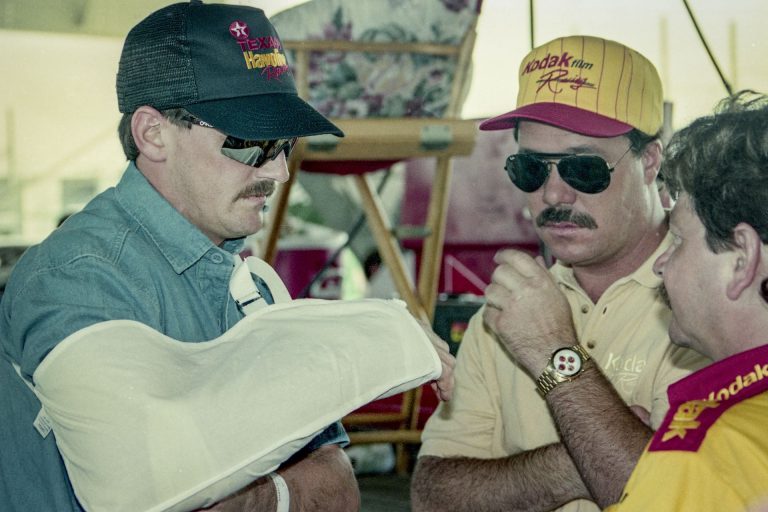MBW Views is a series of op/eds from eminent music industry people… with something to say. The following MBW op/ed comes from Deviate Digital founder Sammy Andrews, who argues that the industry’s current definition of ‘superfans’ is too narrow – and based too heavily on purchasing power rather than other, less tangible, but just as valuable factors…
The word ‘superfan’ has become utterly inescapable. It’s now the centrepiece of every boardroom strategy deck and gets tossed around in marketing meetings as if it’s a solved problem, despite half the people using the term not being able to recognise a funnel if it hit them in the face.
Segmenting audiences and converting high-affinity fans is child’s play with the right strategy and budget (spoiler alert: it always has been). But the music industry is increasingly coming at it all wrong.
Goldman Sachs estimated that the global superfan monetisation opportunity was at $4.5 billion (£3.5 billion) for 2024, and everyone – from major labels to streaming platforms – is scrambling to capture their slice.
Universal is pushing collectibles, “experiences” and new DSP partnerships; Warner has a superfan app in development; and DSPs are touting new premium tiers aimed at this segment. The direction of travel is clear. The question, if you want a long sustainable career and revenue stream, is whether or not the majority of the industry is missing some vital steps and investment in this process.
Having worked in marketing, technology, and having a deep understanding of fan segmentation, engagement and conversion for decades, it’s clear to me that much of this is reactive and in places very superficial – a mass monetisation land-grab with little thought given to long-term loyalty or the broader dynamics that underpin genuine fandom.
“Reducing superfans to walking wallets is painfully short-sighted.”
Yes, the economics look compelling on the surface: global recorded music revenues still grew 4.8% in 2024 (to $29.6 billion), but that’s a marked slowdown from 10.2% the year before. Ad-supported streaming and matured markets are stagnating.
Meanwhile, data from Luminate shows that superfans make up just 20% of listeners, but spend disproportionately – 66% more on live music, for example. It’s obvious why the industry wants to lean into them (and we have been doing that daily at Deviate for eight years). But way too much of the current thinking reduces superfans to walking wallets. And that is painfully short-sighted.
What defines a superfan isn’t just spend. It’s social signalling, identity alignment, emotional investment, and community. These people don’t just consume, they contribute, create and amplify. Strip that down to who can afford a snazzy vinyl box set, access to exclusive content, a new DSP tier or meet ‘n’ greet and you’ve completely missed the point – and the upside.
What’s lost in the (legitimate) rush to monetise is the recognition that superfans don’t emerge from nowhere. They’re made – over time, through culture, content, community and consistent interaction. They are lurking in and run Discord servers, seed content on Reddit, run and interact with fan profiles on TikTok and drive narratives that transcend the music itself.
And increasingly, these communities are being built on platforms the industry doesn’t control, including private message chains, which is why the majors and HYBE’s delve into “superfan” apps makes loads of sense (though I’ve spoken with many managers who question placing their entire fanbase, and that data, in the hands of label-owned apps without appropriate compensation or data porting ability).
These are beautifully messy, decentralised and can be more influential than any label-sanctioned campaign. The smart teams have direct relationships with all of them and let them lead, not just start their own pages. Listening, watching and analysing a fan-led community is more important than just shouting at them if you really want to prosper.
Superfans aren’t defined by spend alone. They’re the ones who build community, convert casual listeners, and elevate culture. Some of the most valuable advocates don’t buy merch, they generate momentum. But the current model most of you are peddling in meetings and investor comms rewards payment over participation, sidelining fans who contribute in other ways.
This isn’t just philosophical, it’s commercial. The most engaged fans – the ones who convert others, who turn up early and bring friends, who evangelise in every digital crevice – often aren’t the ones with the deepest pockets. If you exclude them from your strategy, you’re not only being elitist, you’re actively shrinking your future market. And this isn’t hypothetical, we’ve seen it repeatedly
play out.
There’s also a bigger problem with everyone chasing the same top-tier fans: it becomes a zero-sum game. If every label and platform builds products only for the highest spenders, you’re not growing the market, you’re slicing the same pie into thinner pieces and driving up acquisition costs in the process. That’s not scale, it’s cannibalisation.
And it’s tone-deaf in the current climate. In the UK, cost-of-living pressures are still biting. Many fans are already priced out of shows and merch, or forced to choose between a few premium options they simply can’t afford. Ignoring them because they can’t afford “superfan” tiers isn’t just ethically suspect, it’s strategically naïve.
These are often the people doing the groundwork for you. They’re the street team and artist development team you didn’t pay for. Cut them out at your peril.
“Engagement should be measured by impact and intent, not just transaction size.”
The focus on purely monetising the top end also sucks oxygen away from the lower tiers of the ecosystem: the grassroots venues, the smaller artists who need support with touring, content and community, the entry points where fandom is formed. These spaces are fragile (not least with the incoming tidal wave of AI attention-grab content).
If they collapse because money and attention are hoarded at the top, the long-term supply of fans (and artists) collapses with them. I’ve yet to see this acknowledged in any investor comms, but was pleased to learn that Sony, Warners and Beggars are in some way supporting MVT’s Own Our Venues initiative. Supporting grassroots should be viewed as infrastructure, not charity.
And then there are the artists themselves. The relentless drive for more “engagement” puts them under pressure to be always on, always responding, always posting, always producing new ways to feed the machine. The demand for parasocial intimacy is intense, and it’s often unsustainable without proper strategy and support.
It’s not just an HR or mental health issue. It undermines the very thing that makes superfans: the sense of a real connection with an artist who has something to say, not just something to sell. Treating artists like infinite sales pitch content farms is a fast road to burnout – and
disillusioned fans.
That risk is amplified by the rise of AI. Despite some very clever deepfake technology that I’ve zero doubt our industry will embrace, as well as sue the arse off, pretty soon human interaction and authenticity becomes the main differentiator in life. Over-automating, totally rinsing them or faking connection erodes trust, and once that’s gone, you don’t get it back.
Value has to be redefined. Advocacy, community-building, and creativity from fans aren’t side-effects – they are core assets. Engagement should be measured by impact and intent, not just transaction size. The industry has to start valuing the depth of connection not just running a six-week marketing campaign and hoping for the best.
Inclusivity has to be embedded into strategy. You’re not devaluing premium, you’re reinforcing it with a broader foundation of loyalty and reach and fuelling the funnel.
And fan communities must be co-created. The best ones aren’t top-down campaigns, they’re spaces where fans feel ownership, agency and contribution. Let them help shape the story. That’s where the real loyalty comes from. Use data properly. Not just to identify spenders, but to understand behaviours, motivations, emotional signals – the real ‘why’ behind fan actions. That’s how you build segmentation and campaigns that resonate. Anything else is just noise.
And start looking in new places. The sheer amount of you that are constantly recycling the same high-spending demographic, chasing diminishing returns with increasingly desperate bundles isn’t growth, it’s inertia. Build fandom in new geographies, new age groups, new cultures. Make the pie bigger. Or someone else will.
The $4.5 billion is real. But most of it won’t go to the loudest or the fastest. It’ll go to the people who build properly. for the future. The ones who understand that superfans are made, not just mined, who respect their audience enough to build something durable, not just extract what’s easy. Those are the winners. The rest will be left asking why the gold turned out to be dust.
MBUK is available as part of a MBW+ subscription – details through here.
All physical subscribers will receive a complimentary digital edition with each issue.Music Business Worldwide









